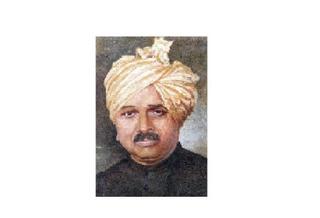Dr. K. Rohiniprasad
Vinayakrao Patwardhan (1898-1975) the eminent vocalist from Gwalior gharana was born in Miraj in south Maharashtra. His uncle Keshavrao provided him with initial training in music. Those days musicians were associated with various vices and never received due respect in the society. To dispel these notions, Vishnu Digambar Paluskar set up music schools so that boys from respectable families could take up music as a profession. Vinayakrao was one of the first products. In 1907, he went to Gandharva Mahavidyalaya at Lahore, where he was taught by Paluskar directly. His guru not only taught music to his students but also inculcated good habits in them. Under Paluskar's tutelage young Vinayak imbibed his principles and discipline. As a result he became one of the important singers of his times and also earned due respect for his austere lifestyle and dedication to the art of music.
Paluskar wanted his disciples to emulate his example and take up the teaching profession. Vinayakrao accepted teaching assignments at the various branches of the school at Bombay, Nagpur and Lahore.
Vinayakrao’s sweet and high-pitched voice impressed everyone including the legendary actor-singer Balgandharva. On one occasion the great Gwalior veteran Ramkrishnabuwa Vaze had thrown a challenge to singers in Pune. Vinayakrao accepted it and learnt complex ragas from Vazebuwa. Vinayakrao's fellow-students such as Omkarnath Thakur did not like this. But Vinayakrao considered the idea of learning from a veteran singer like Vazebuwa much more important than standing on false prestige. His ability to take the right step at the right time benefited others also. In the late forties as Bhimsen Joshi was searching for the right teacher he happened to meet Vinayakrao in Jalandhar. The latter advised Joshi to learn from Sawai Gandharva and it proved to be an invaluable suggestion.
Vinayakrao took up roles in Marathi musicals and was perhaps the first classical vocalist to have sung for a film. However, heeding his teacher’s admonition and advice, he later went to Pune and established a branch of the Gandharva Mahavidyalaya there. Though he was young, he decided to dedicate himself to teaching music and ignored the lure of the drama and films. He trained a number of disciples who became famous singers and teachers in their own right. They include his guru’s son D.V.Paluskar, the eminent singer.
At the time of his father's death, D.V. Paluskar was only 10 years old. Even as Vinayakrao Patwardhan and Pandit Narayanrao Vyas taught him music they noticed in the young boy a reluctance to conform fully to the Gwalior gharana. They encouraged the youngster to develop his own independent style and D.V.Paluskar grew up to be a legendary vocalist.
Vinayakrao Patwardhan’s singing reflected the simple and straightforward approach to ragas, which is the characteristic of the Gwalior style. As a singer Vinayakrao specialized in taranas which proved very popular with the audiences in India and overseas. His favourite ragas included Bahar, Adana, Multani, Malhar, Jaijaivanti, Hamir and Bhairavbahar. The energy and effervescence in his music made him a much sought-after performer. He went around the country performing in most of the important music festivals. He was a great success with the audiences. He was also one of the few practising musicians of the time who took the trouble of writing textbooks on music. In his seven-part Raag Vigyan series, Vinayakrao described the important aspects of various ragas as well as their grammar.
In his concerts and recordings his fellow-student Narayanrao Vyas accompanied Vinayakrao. Their duet concerts became very popular. Vinayakrao received the Padmabhushan in 1972. Vinayakrao also led the Indian cultural delegation to USSR and other countries. One of his disciples, Pt. L.R.Kelkar settled down in Madras and the present author happened to learn sitar from him initially. Among Kelkar’s better known disciples is the violin virtuoso N.Rajam.



0 Comments:
Post a Comment
<< Home